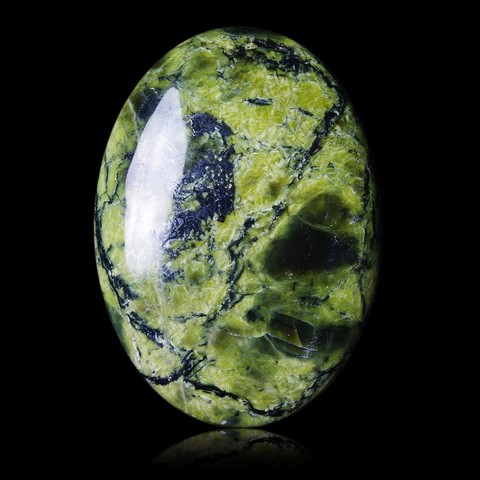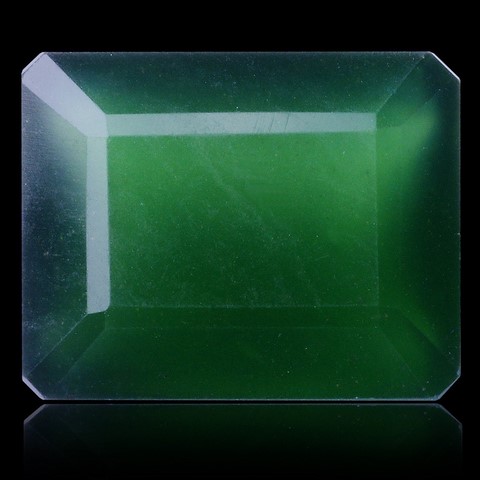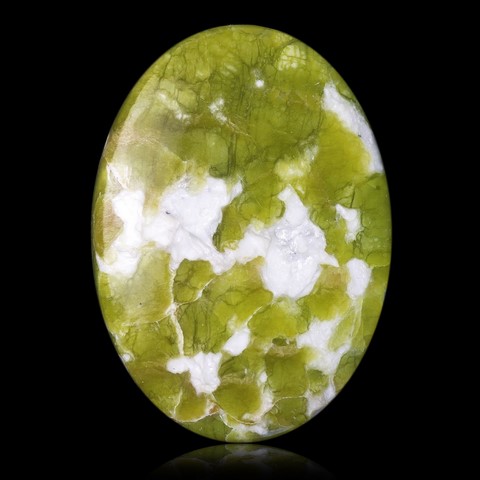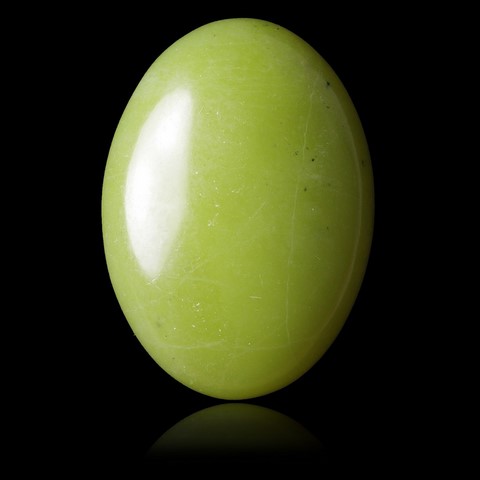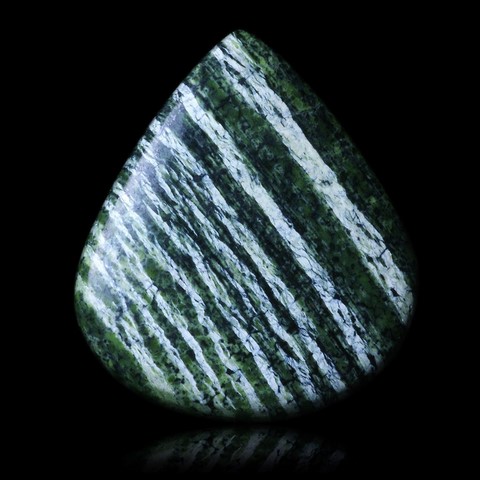SERPENTINE
Class : Silicates
Subclass : Phyllosilicates
Crystal system : Triclinic / Monoclinic
Chemistry : Mg3Si2O5(OH)4
Rarity : Common
The term serpentine designates a group of minerals of formula Mg3Si2O5(OH)4 whose most frequent representatives are the antigorite (sometimes called bowenite when it is dense and compact), chrysotile (designated under the industrial term of asbestos) and lizardite. Replacements are usually limited, except in nickel serpentines where Ni replaces Mg, and where NiO contents can reach 30% (garnierite). Its name comes from the Latin serpens (snake) in allusion to its scaly, mottled green appearance. The structure of the serpentines is identical to that of kaolinite (TO clay) with sheets made up of a layer of tetrahedra and a layer of octahedra. Serpentines are alteration products of ultra-basic rocks rich in magnesium, resulting from a hypogenic transformation (a kind of self-hydration by the last magmatic fluids) of forsterite or more rarely of enstatite. In the case of a very intense alteration, the dunites, peridotites or pyroxenites are transformed into serpentinites, rocks formed essentially of minerals of the serpentine group. These minerals are used in decoration and as ornamental stone, sometimes cut into cabochons for jewelry. It is used in the composition of certain neutron retarder concretes, and sometimes as a refractory material and fiber cement.
Serpentine in the World and in France
Chrysotile : the deposits are the same as for antigorite. It should be noted that fibers, exceptional in their length, have been discovered in the American Appalachian deposits (Lowell and Eden, Vermont), in Quebec (Abestos, Thetford Mines) and in Norway. In France, chrysotile was exploited at Cap Canari (Corsica)
Lizardite : it is known in serpentinites around the world but the only samples of aesthetic value come from Italy (Coli and Val Trebbia in Emilia-Romagna), sometimes in moraines (Val Sissone, Lombardy). Its particular frequency in the USA, Canada and Australia is an artifact due to the fact that serpentinites have been particularly exploited for asbestos or chromite in these regions.
Fakes and treatments :
No fake listed for this mineral.
Hardness : 2.5 to 3.5
Density : 2.55 to 3.30
Fracture : Irregular to scaly
Streak : White to pale green
TP : Opaque to semi-transparent
IR : 1.541 to 1.573
Birefringence : 0.005 to 0.012
Optical character : Biaxial -
Pleochroism : Not observable
Fluorescence : None
Solubility : None
Magnetism : Paramagnetic
Radioactivity : None

